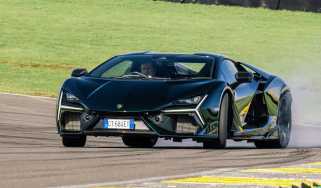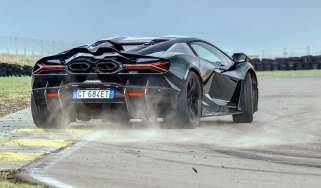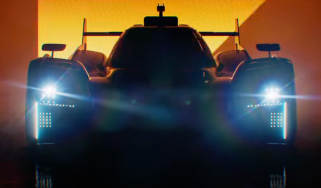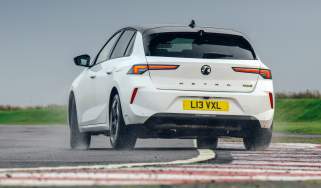McLaren 750S replacement to get detuned W1 hypercar hybrid V8
McLaren has confirmed that the all-new hybrid V8 it’s developed for the W1 will live on beyond the run of 399 hypercars, powering future McLaren supercars

McLaren has confirmed that the successor to the 750S supercar, which we don’t expect to see before 2028, will use a derivation of the all-new, MHP-8 twin-turbo V8 engine with hybrid power. Head of comms Piers Scott confirmed as much during the closing minutes of a technology workshop, going through in detail the powertrain innovations and solutions set to feature on the new 1278bhp W1 hybrid hypercar.
When asked whether the new V8 would see use in models beyond the 399-car run of W1s that are set to be built, Scott said: ‘I think it's very safe to say that obviously, a considerable amount of work and investment has gone into developing this new powertrain.
‘We are pioneering it, introducing it on the W1, but we would not be investing in this engine for just 399 cars. This high-performance hybrid V8 will power the next generation of McLaren supercars, but we're not making any further announcements today on exactly when that will be.'

A wholesale successor to the 750S is presumably at least three years away, with the de rigueur hardcore ‘LT’ model based on the 750S still yet to break cover. If that car arrives next year (around the same time that we’ll be driving W1) it’ll be at least three years from that point, before we see the third-generation McLaren supercar.
Being this far out from its introduction and given the fluidity of the legislative landscape, exactly what would power it was open to speculation. It was always unlikely to be all-electric, but whether it’d use a version of the Artura’s V6, a version of the current V8 or a version of the W1’s V8, was to be confirmed.
Now we know it’s getting a version of the W1’s V8, in addition to some level of hybrid power. The headline figures of the W1, its V8 and the powertrain as a whole, are spectacular, so it’s not a question of if, but how much, the package is toned down for the series production supercar. The engine alone in the McLaren W1 produces more power than the ICE and hybrid system of the McLaren P1. Good for 915bhp, 664lb ft and a redline of 9200rpm, the engine is a monster performer, augmented by the 342bhp hybrid system for a grand total of 1257bhp and 988lb ft going to the rear wheels.
With hybridisation it’s reasonable to expect that the 750S replacement will be a heavier car than the current ICE-only model, so a number that ensures the 533bhp/ton ratio the 750S achieves is beaten is all but certain. Assuming a kerb weight of 1480-1580kg, 850bhp wouldn’t be far off the mark. It’s likely that the W1’s new eight-speed dual-clutch transmission will be passed on too. We can also expect a battery that’s bigger than the performance-focused 1.384kWh unit of the W1, closer in all likelihood to the 7.4kWh unit used in the McLaren Artura, for more usable driving range.

As McLaren has been so at pains to insist with the W1, this new powertrain is about more than numbers. It’s about a broad range of performance, the experience and the noise. A lot of work has gone into the MHP-8’s intake and exhaust, as well as the whole package, to make it make the right noises and make sure more of what you want and less of what you don’t, makes it to the driver.
Richard Jackson, chief engineer for powertrain, explained: ‘We worked on building the sound and vibration to a crescendo towards a rev limit, really encouraging the driver to chase that red line.
‘We've enhanced exhaust and induction sound transfer into the cabin. And to make the good sounds stand out, we've removed the unwanted mechanical noise. Building that crescendo and the sound enhancement to that increased rev range, one of the key areas of development was tuning the exhaust system at the manifold. So we tuned the length of the runners and the manifold to build the noise and the sound as you go towards the rev limit.’







